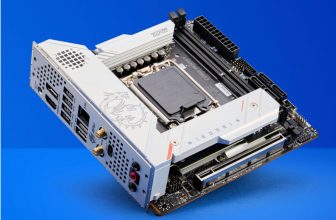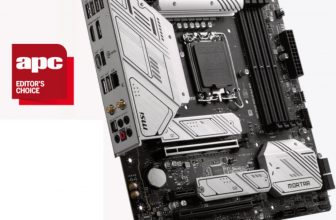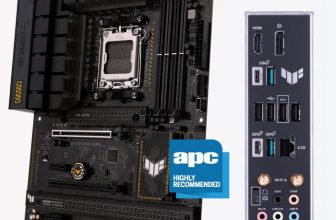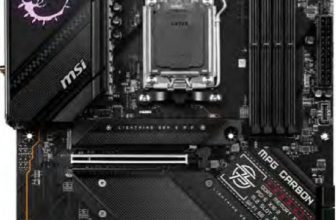MSI X470 Gaming Plus Review

MSI X470 Gaming Plus Review: How low do you want to go?
It’s obvious from the moment you first open the box of the MSI X470 Gaming Plus that keeping costs down was a priority for the company. It’s definitely not a looker, with rather sparse cosmetic additions and lots of visible PCB traces, but for those who don’t have a Perspex window, does it really matter? At the end of the day, MSI has delivered an X470 motherboard that performs just as well as the rest, for a remarkably low price.
[sc name=”amazon image”]
Despite such a rock- bottom price tag, most of the basic features you’ll find elsewhere are all present and accounted for; it just doesn’t look as pretty.
The ATX layout has allowed MSI to fit three full-length PCIe x16 lanes, though only one of these has steel reinforcement, whereas all of the competitors always have the top two reinforced to stop GPU sag if you’re running SLI or CrossFire. Squeezed between these are three more PCIe x1 lanes, but like most ‘boards, you’ll lose physical access to those nearest the full-length lanes if you fit a dual-slot card.
MSI makes much ado about its military-class certification when it comes to quality, so the lack of this feature on this budget motherboard was a little surprising; instead it carries the ‘Gaming Certified 1’ badge, suggesting that the quality of the components used isn’t quite up to the usual long-term lifespan found on MSI’s more expensive models.
It may not be designed for tweakers, yet MSI has included the optional 4-pin CPU power connector alongside the traditional 8-pin CPU, which should deliver even more stable power for AMD’s multicored behemoths.
Twin M.2 slots are included, though neither comes with a heatshield.
As with the other ‘boards, only the top can fit the longest M.2 size of 22110.
Six SATA 3 ports is par for the course on the X470 at this price point, while the four memory slots are rated to handle memory speeds up to 3,466MHz thanks to the ‘DDR4 Boost’ design, which uses an isolated memory circuit to limit interference.
One area where the price differential is noticeable is the onboard audio, which uses Realtek’s ageing ALC892 codec. This is rated to have an SNR of 95dB, which is substantially lower than the 120dB of the newer ALC1220 codec used on other ‘boards. As a result, we’d suggest popping in a cheap soundcard to make up the difference.
In terms of I/O options, there’s also been some trimming in terms of USB outputs, with four USB 3.1 Gen 1, two USB 3.1 Gen 2 and two USB 2.0, and no sign of a Type-C connection. Along with the HDMI output, which is only HDMI 1.4, there’s an archaic DVI-D output in case you have a monitor circa 2006.
While there have been a few areas cut to keep the cost down, performance hasn’t suffered. Our biggest issue is the use of the ALC892 audio codec, which is noticeably inferior in practice to the ALC1220 codec found on other ‘boards, and will require the use of a peripheral sound device if you’re not outputting audio via HDMI to a receiver. And if you do have to buy an additional sound device, the price difference becomes null and void, making this motherboard hard to recommend.
Verdict
It might be the cheapest around, but a few too many features have been trimmed to hit this price point.
3.5/5
When you purchase through links on our site, I may earn an affiliate commission. Here’s how it works.







